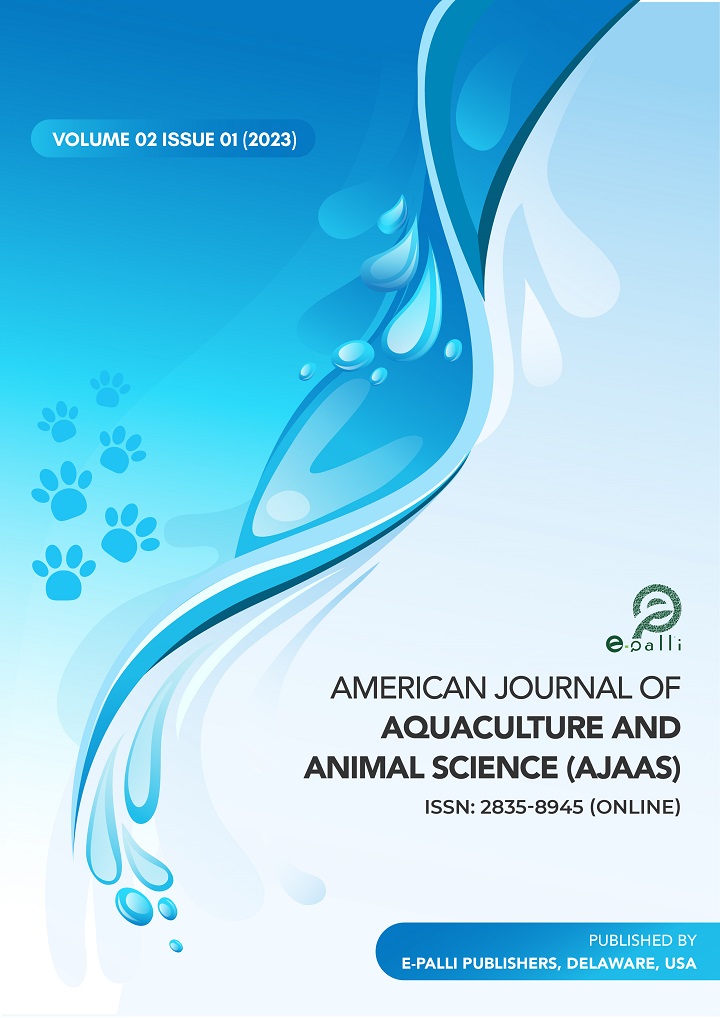Public Health Awareness Status of Zoonotic Diseases in Mogadishu-Somalia
DOI:
https://doi.org/10.54536/ajaas.v2i1.1211Keywords:
Benadir Region, Zoonotic Diseases Transmission, Awareness, Domestic and Wild AnimalsAbstract
Zoonotic diseases cause mild-to-severe illnesses in humans that transmitted from vertebrate animals. The majority of the human diseases originate from animals (61%), and 70% of them are emerging diseases. This study was conducted with the main objective of public health awareness of Zoonotic diseases in Benadir region. Questionnaire was structured into 4 sections namely, socio- demographic characteristics of residents, awareness on domestic animals, wild animals transmission of zoonotic diseases and Zoonotic diseases you heard. Simple random sampling with a total of 80 questionnaires were administered and descriptive statistics was used to analyzed data. The 56 respondents (70%) had domestic animals at home while 27 (33.75%) caged their domestic animals and 36 (45%) respondents vaccinated their domestic animals. The 59 respondents (73.75%) were aware of that the domestic animals (dog, cat, bird, rabbit, goat and cattle) can transmit disease to human. Resident awareness on wild animals’ Zoonosis, showed that 36 (45%) respondents were known of wild animals, while 11 respondents (13.75%) caged their wild animals (Monkey). The 49 respondents (61.25%) were conscious about the transmission of disease to human. Result revealed that the study areas were well aware of zoonotic diseases from both domestic and wild animals. List of Zoonotic diseases that respondents heard were tuberculosis (25%), brucellosis (22.54%), anthrax (17.5%), rabies (20%) and toxoplasmosis (15%). Therefore, we recommend that the people should try the best way to avoid diseases acquired from contact with animals is to thoroughly wash hands with soap and water after close contact with animals can be supervised among adult and young to avoid zoonosis diseases in human. Animal owners must carefully practice biosecurity measures to keep away from diseases contamination both in the animals and human.
Downloads
References
Allen, T., Murray, K. A., Zambrana-Torrelio, C., Morse, S. S., Rondinini, C., Di Marco, M., Breit, N., Olival, K. J., & Daszak, P. (2017). Global hotspots and correlates of emerging zoonotic diseases. Nature Communications, 8(1), 1–10. https://doi.org/10.1038/s41467-017-00923-8
CDC. (2017). Workshop Summary One Health Zoonotic Disease Prioritization for Multisectoral Engagement in Bangladesh. https://www.cdc.gov/onehealth/pdfs/bangladesh-508.pdf
Cleaveland, S., Kaare, M., Tiringa, P., Mlengeya, T., & Barrat, J. (2003). A dog rabies vaccination campaign in rural Africa: Impact on the incidence of dog rabies and human dog-bite injuries. Vaccine, 21(17–18), 1965–1973. https://doi.org/10.1016/S0264-410X(02)00778-8
Han, B. A., Kramer, A. M., & Drake, J. M. (2016). Global patterns of zoonotic disease in mammals. Trends in Parasitology, 32(7), 565–577. https://doi.org/10.1016/j.pt.2016.04.007
IEDCR. (2020). Yearly distribution of Nipah cases in Bangladesh 2001–2020. https://iedcr.gov.bd/surveillances/93c87e70-9c22-4f21-9506-a1161ecf404f
Kahn, L. H. (2011). The need for one health degree programs. Infection Ecology & Epidemiology, 1(1), 7919.–https://doi.org/10.3402/iee.v1i0.7919
Karesh, W. B., Dobson, A., Lloyd-Smith, J. O., Lubroth, J., Dixon, M. A., Bennett, M., & Loh, E. H. (2012). Ecology of zoonoses: Natural and unnatural histories. The Lancet, 380(9857), 1936–1945.
Kwan, J. L., Park, B. K., Carpenter, T. E., Ngo, V., Civen, R., & Reisen, W. K. (2012). Comparison of enzootic risk measures for predicting West Nile disease, Los Angeles, California, USA, 2004–2010. Emerging Infectious Diseases, 18(8), 1298. https://doi.org/10.3201/eid1808.111558
Mazet, J. A., Clifford, D. L., Coppolillo, P. B., Deolalikar, A. B., Erickson, J. D., & Kazwala, R. R. (2009). A “one health” approach to address emerging zoonoses: The HALI project in Tanzania. PLoS Med, 6(12), e1000190. https://doi.org/10.1371/journal.pmed.1000190
OIE. (2020). Update on avian influenza in animals (types H5 and H7). https://www.oie.int/en/animal-health-in-the-world/update-on-avian-influenza/2020/
ones, K. E., Patel, N. G., Levy, M. A., Storeygard, A., Balk, D., Gittleman, J. L., & Daszak, P. (2008). Global trends in emerging infectious diseases. Nature, 451(7181), 990–993.
Rabinowitz, P. M., Kock, R., Kachani, M., Kunkel, R., Thomas, J., Gilbert, J., Wallace, R., Blackmore, C., Wong, D. & Karesh, W. (2013). Toward proof of concept of a one health approach to disease prediction and control. Emerging Infectious Diseases, 19(12).
Slingenbergh, J., Gilbert, M., Balogh de, K., & Wint, W. (2004). Ecological sources of zoonotic diseases. Revue Scientifique et technique, 23(2), 467–484. https://doi.org/10.20506/rst.23.2.1492
Wang, L., & Crameri, G. (2014). Emerging zoonotic viral diseases. Revue Scientifique Et Technique De l’OIE, 33(2), 569–581. https://doi.org/10.20506/rst.33.2.2311
Downloads
Published
Issue
Section
License
Copyright (c) 2023 Moktar Omar Sheikh Mohamed, Hussein Mohamed Salah, Zakariye Abdifatah Ahmed, Jeilani Busuri Mio

This work is licensed under a Creative Commons Attribution 4.0 International License.



